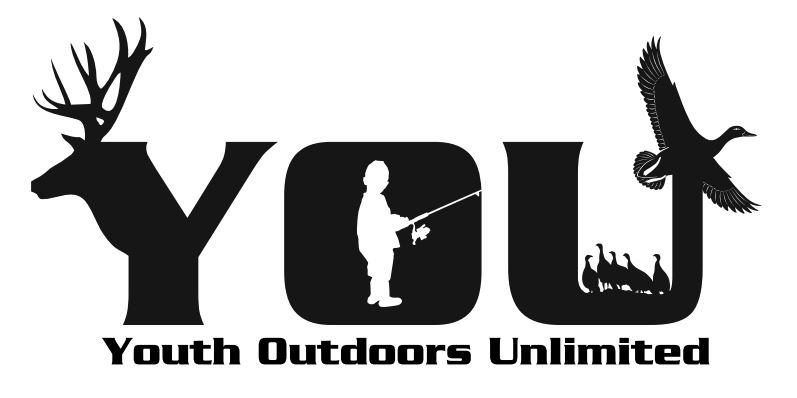Archive for November, 2015
Make It an Outdoor Weekend
This Thanksgiving time is really a weekend package, isn’t it? Here’s a chance to celebrate the blessings of family and food, and then move on to the wildlife and wintry family outings for which we can truly be grateful. This looks like a perfect late fall weekend – and you have plenty of time to lock yourself and family inside home or store – so throw together some leftovers and sandwiches and make it an outdoor weekend.
This may be the perfect weekend for your Christmas tree hunt. Our Wenatchee National Forest is loaded with perfect young Douglas firs (the only true Christmas tree, The Old Man insisted) and whatever other perfect choice you may prefer. Permits are still just five bucks each, and your family may buy two. Pick yours up at the Ellensburg Chamber of Commerce office, the Cle Elum Ranger Station, the Cle Elum Visitor’s Center, Intermountain Radio Shack, Pioneer Coffee, Mac A Bees or Sportland Shell Mini Mart at Roslyn. You’ll like the way it makes your house smell.
Or go find and watch some wild critters. We are being told to prepare for an El Niño winter. The jury is still out, but it could mean a winter much closer to normal than we saw last year. We may have some of the best opportunities to observe and watch wild things in semi-wild places we’ve had in a couple years.
A couple at-large members (Aren’t we all, really?) of the Reecer Creek Rod, Gun, Working Dog & Outdoor Think Tank Benevolent Association (RCRGWD&OTTBA) have recently raised these thoughts, and have asked that I again pass along the simple guidelines for safely watching wintering wildlife. As chair of our little think tank’s Winter Wildlife Watch Subcommittee, I am duty bound. Thus, the following.
Winter survival is everything, of course, to deer, elk and bighorns. Under the best of conditions, the stress of winter is the major controlling factor for their numbers. Our responsibility is simply to avoid adding to the normal stresses of winter.
Warm protective coats and limited movement make it possible for deer, elk and sheep to slightly lower metabolic rates and caloric requirements. But even with a decent food supply and limited activity an average winter will cost a large ungulate 20 percent of its fall weight. Disturbed, a critter may double its rate of energy burn, and burning away 30 percent of fall body weight will often cause death, even if food becomes available.
The bottom line of all this is that we have an obligation to observe critters from a distance comfortable to them, not us. I often think about Dale Swedburg (manager of the Sinlaheken Wildlife Area) and his “Facts are facts, but perceptions are reality!” statement. Even if we think we pose no danger, what matters is what the animals perceive. Causing wildlife to stop feeding, or leave a feeding/resting area, will affect their health and well-being. Be as unobtrusive as possible.
You will likely find wild things all around the valley and down the Yakima Canyon on most any drive – with increasing numbers as winter wears on. Once real snow arrives, Joe Watt Canyon is a favorite sledding area, often with a fair number of elk nearby.
For a more centralized and organized chance to observe bighorns, elk and deer (beginning now, but in full swing by early January), head south. West out of Yakima you will find the Cleman Mountain Bighorn feeding area (just north of the intersection of Highways 12 and 410). Then go a couple miles south on Highway 12 to the Oak Creek Wildlife Area. Over a couple hours, you may see a hundred or more bighorns and deer, and a thousand or more bull, cow and calf elk.
Wherever you wander, watch the wintry roadsides. Hitting a deer or elk can mess up the whole day for both of you.
Finally, the Thankfulness for a Life Outdoors Subcommittee of the RCRGWD&OTTBA asks that you find a brisk outdoor moment over the weekend to count the blessings of your life in Paradise.
My list includes gratitude that my Hucklings and Grand-Hucklings have a sense of belonging to the earth. I like that Anna and Edward find time away from singing, modeling, acting and stunt work for fresh air and grounding. I am grateful to Tim and Nicole and Michelle and Tena for their commitment to immersing my grandkids in fresh air and dirt, and to James for raising a bunch of wild outdoor nuts.
I’m thankful that we can find wildlife to enjoy most anytime of the year in our valley and nearby.
I am thankful for the fish and game which sustain my family. And that we are able to harvest most of it within a couple hours of our home.
I’m thankful for the people who enrich my life with their laughter and spirit and faith and love.
And I am always grateful to live in a place where the breeze brings us ever-changing fresh air.
Comments Off on Make It an Outdoor Weekend
Here’s to Thanksgiving
Do we outdoor nuts have more traditions for Thanksgiving than sane people?
What got me thinking about this was a fellow I overheard talking to one of the food angels at Fred Meyer a couple days ago. He was apparently on a list-scripted mission from his wife, in advance of Thanksgiving. In a rich Deep South voice he was asking about “what kinda cooking ohl” he should be bringing home for the wife’s holiday creations.
Some years back, I watched one of those Deep South “Home for the Holidays” combinations of cooking and memories. It featured Annie Pots and several other well-known southern actresses and writers along with a couple Yankees. In turn, as the cooking and talk evolved, each told of the traditions – from the classic southern slow-cured and smoked ham to various game – with which he or she grew up.
Anyhow, two of the men were talking about their Thanksgiving and Christmas traditions, when the southern gentleman mentioned bobwhite quail. “We would be out with the dogs near first light working the field edges,” he drawled, “and we would shoot a dozen quail. Once they were dressed and ready, we would smother them in gravy and cook them to perfection. That was breakfast for every Thanksgiving and Christmas morning I can remember.” His Yankee friend stared at him patiently for a time, and with his clipped New England accent said, “Nahw, let me get this straight. To celebrate the holidays, you first shoot the little birds… and then you smother them?”
Traditions.
A couple homeys will be after pheasants on Thanksgiving morning, as they have been since boyhood. And one of them will provide Thanksgiving dinner, if he gets a couple birds. His wife, he tells me, always has a turkey in the oven, “Just in case.”
For some years, we went mom’s, in Boise. Our fare was a wild goose or a game roast, but after dad’s passing, we settled into turkey and the rest. There was still game on the table; maybe antelope, elk or deer mincemeat. And fruit, too.
For most of my life hunting has tied to the gathering of fall fruit, mostly apples and pears. When Edward, last of the Hucklings, was an early toddler, it dawned on me that we had some pretty deep-rooted traditions with that stuff, too.
In Wenatchee, my early deer hunting was done in and around the apple orchards. Apple harvest and deer harvest have long been joyfully intertwined, and there is always a familiar anticipation as I swing past an orchard fruit stand for apples or freshly‑pressed cider.
During one of my last deer and elk hunts in western Colorado, I stopped at an orchard where I had often picked up boxes of apples, and paid my annual homage. The apples came home to the basement until we were ready to use them.
Big game season rolled by. Game carcasses passed through the kitchen and into the freezer. Our young Hucklings, Tena and Anna, would proclaim each package complete and two‑year‑old Edward (“Taco Eddie” he called himself that fall) would climb to the table and exclaim, “Gotum antgope! Gotta deer! Meat, meat,” as we processed winter’s food. The rhythm of life and family seems always sweetest in the fall.
Suddenly that Thanksgiving was before us when I stumbled over the apples in the basement. The evening before the big day, we dug out the paring knives and set about making our famous unsweetened chunky applesauce.
I was filling a couple large kettles with apple chunks, as their mom rounded the kids up for bed. “Abbosauch?” Taco Eddie asked, hands full of apple pieces. “Yup,” said Tena, “they’re going to put it in jars for us to eat for breakfast and stuff. It’s going to be a good winter!”
No Thanksgiving dinner is complete without applesauce. Each spoonful holds the fresh, crisp taste of fall, the smell of just-picked apple orchards, and the joy of the hunt.
Over our last Thanksgiving together here, Edward and I talked about our hunts and time afield as we ground game meat for sausage and burger. We laughed about how his Boise grandma and granddad loved their game meat and always turned the processing of meat (“real responsibility and real sacred food”) into a celebration. As the grinder cranked along, we toasted the season; To food made medicine with gratitude and prayer, and to our good health from joyfully consuming the gifts of the earth.
At some point, Edward looked up from the filling bowl of ground meat. “We always have a lot to be thankful for, don’t we?”
May your holiday traditions remind you of all our outdoor gifts here in Paradise. (And somewhere in there, you might say a prayer for those across the world who can’t even think about such things today.) Be grateful. Happy Thanksgiving.
Webster’s New World Dictionary defines it this way: “Thanks’giv’ing. 1. A formal public expression of thanks to God. 2. An annual U.S. holiday.”
Comments Off on Here’s to Thanksgiving
Safe and Fun Family Recreational Shooting
I don’t think a week goes by without a conversation with one or another outdoor nut homey about how we learned the pleasure of shooting in one or another safe, family atmosphere. We share our experiences, laugh about instructors and range masters who were funny and deadly serious, and rue the seeming lack of such opportunities for families and kids today. Invariably, we learned to shoot straight while becoming one with some old .22 rifle. Our good luck here in Paradise is that the Kittitas Valley Rifle & Pistol Club has – in the midst of its competitive league activities – continues its family-centered Light Rifle Class League for winter shooting.
If you have a .22 or a good air rifle and want to involve your family in a winter-long program of inexpensive fun, instruction and good shooting, you will want to make the Fall Membership Meeting at the club’s HQ (608 West 15th Avenue) this coming Tuesday. There, you will meet the range and those who operate it, while checking out programs and fees to fit your family interests. I can assure you, based on a long history of shooting and countless conversations with other shooters, the training and shooting pleasure of this winter will still light your youngsters’ eyes a half dozen decades down the road. You will make a family memory that will never fade.
For me, it started just after my Aunt Veva – my mom’s oldest sister – gave me the first of a couple firearms that had belonged to her late husband Herman van Temmon. I was seven or eight years old, and already wandering the big sage country of East Wenatchee, Washington. I was in the habit of disappearing for most of a day while studying animal dens, wandering along the mighty Columbia River, making arrows out of cedar shingles, turning old wooden apple boxes into rabbit traps and showing signs of squandering my life on the outdoors.
Aunt Veva observed all this with keen interest – and a certain level of trepidation. Nonetheless, she and Uncle Vic drove up from their home in the Bay Area, bringing an old Winchester Model 67 single-shot .22 rifle (manufactured around 1900). In the meantime, my father – The Old Man – decided it was time for me to learn to handle firearms properly, and enrolled me in an NRA Youth Shooting League. In some sort of cosmic convergence, that day Vic and Veva handed me the little rifle. Its long slender lines made it the most beautiful thing I had ever seen. I was a goner.
Then Aunt Veva sat down and pulled me close. She had the most serious, sad face I had ever seen. Eyeball to eyeball, she explained that her first husband, Van, had died in a tragic, careless shooting accident not long before I was born. They were not long together, and had no children, but he would have wanted his already-outdoor-nuts nephew to have it. I was to see to it that it served the purpose for which it had been made; food and fun. And I was always to be safe. When I was grown, and safe and wise with firearms, she said, there was a “real” rifle for me – Van’s hunting rifle. “So start with this one,” she said, “and learn well.”
For years after, The Old Man drove me and my brothers to East Wenatchee’s Pangborn Field for an NRA Youth Shooting League.
Look over the 1950s minutes of the Kittitas Valley Rifle and Pistol Club (KVRPC) and you will see that the shooting we grew up with was common most everywhere. By the mid-60s, small-bore shooting had become seriously competitive. Over the past few years, the club has added the light rifle recreation league. This, I think, is what The Old Man had in mind when he hauled his three sons and their little .22 rifles to that “NRA Hangar” at Pangborn Field.
Here is an opportunity for you and your family to develop the skills, patience, discipline and confidence that family recreational shooting programs promise and deliver. It will start just in time to be one of the best Christmas gifts you will ever hand your household.
Hal Mason and other officers will tell you that KVRPC’s Light Rifle Class League is a “do your own thing night and a lot of fun, (with) swinger targets, paper targets and at times we set up some steel critters. All in a warm safe environment. Cheap too.” The 16 week league program starts in just a couple weeks. Bring your favorite .22 caliber rifle or .17 or larger serious air rifle (under 10 pounds), ammo and a desire for safe fun. Everything else will be waiting for you; regulation 10-bull NRA targets, a modern heated range facility, the direction of a qualified range master and coaching as needed/desired.
The KVRPC fall meeting is Tuesday (Nov. 17). 7 p.m. at the KVRPC range at 608 W 15th in Ellensburg. Everyone who enjoys shooting .22 pistols and rifles is welcome to come and learn about the 15-16 shooting season schedules and information. Call Mel Goudge at 509-925-4285 or Hal Mason at 509-962-3002 for more details
This is for you and your family. This is for you to discover (rediscover) the joy of safe recreational shooting and the deep pleasure of watching a kid or grandkid develop skill and confidence. This is for lifelong pleasure.
Comments Off on Safe and Fun Family Recreational Shooting
Who Should Manage Our Mountain Lions?
Since the 1930s, most states have citizen commissions overseeing fish and wildlife management. Commissioners are generally appointed by the governor to set policy and seasons based upon the research and testimony of professional biologists in the agencies they oversee, and that of various public entities. Mountain lions (aka pumas and cougars) are among the various wildlife species managed by state agencies and commissions.
The Washington State Fish and Wildlife Commission is organized under RCW Chapter 77.04. Chapter 77.04.012 lays out the mandate of the department and commission, which affirms that “wildlife, fish, and shellfish are the property of the state.” It goes on to identify the responsibilities of the commission, the department director, and the department to look after said property. The governor (under RCW 34.05.330 and WAC 82-05-050) might override a commission season-setting or harvest-quota administrative rule if the panel abused its discretion or misapplied the law.
Over the last couple decades, mountain lions have been much in the news around the country. For a time before the turn of the current century, in several western states including Colorado, California and Washington, politicians and animal rights activists succeeded in wresting management of mountain lions from professional biologists and wildlife commissions. Within a few years, assertions that cougar populations were threatened or downright endangered, the hunting of cougars was brought nearly to a stop. Within a relatively few years, however, lions had become such deadly pests – killing pets and humans – that cougar management was mostly turned back over to wildlife commissions and agency professionals. Still, big cats make such a juicy pie that some politicians around the West cannot keep their fingers out of it.
I have been fascinated by cougars most of my life. I think it has something to do with having been within 15 feet of a cougar the summer of my fourth year – just about the end of WWII. Off Grant Road, in East Wenatchee, a couple of us tots were playing outside on a hot and dusty day when a mountain lion walked into our mostly-dirt front yard and laid down in the shade of a neighbor=s car. A big male, it twitched its tail and watched us play. I can still feel that rumbling purr.
Our mothers freaked out, an armed neighbor showed up and the cougar died. The big tom turned out to be the pet of a guy up by Fancher Field. He had raised it from a kitten. That day, it had gone AWOL.
Since the turn of the century, we know a lot more about how cats behave among humans. The work of Project CAT (Cougars and Teaching) involved the Cle Elum/Roslyn Schools, the Washington Department of Fish and Wildlife, the Pacific NW Center for Spatial Information and several other high-profile partners. Project CAT put Upper County K-12 kids at the front of research into the evolving relationships, and conflicts, between people and cougars. In the face of ever-increasing contact between pumas and people all over the West, this was important, good stuff. We all came away with a deeper appreciation of how well mature cats behave themselves among humans.
We also have a better sense of how yearlings become troublesome as they wander, seeking new home territories. Those cats are the focus of most hunting and harvest in Washington. In 2014, the commission’s quota was roughly 245 lions across the state. This year, the commission, in response to a substantial amount of evidence and testimony regarding growing numbers of cougars, set the quota at about 270 (“about” because quotas in various game management units are often stated as a range of two or three animals).
In response to their inability to convince the Wildlife Commission that lion populations are not expanding at the rate agency professionals stated, the Humane Society of the US (HSUS) petitioned the governor to reduce cougar quotas to the 2014 numbers. Apparently, he decided that the 25 additional animals in the 2015 quota was an abuse of our Washington Wildlife Commission’s discretion, and recently granted HSUS its petition, overriding the commission and returning quotas to the 2014 levels.
In several ways, this seems like the 1990s again. Is this the beginning of another cycle in which our wildlife professionals lose more of their charge to look after the balance between people and wildlife? That certainly is what we have asked them – hired them – to do. Frankly, I’m not really sure if we are seeing a step backward or not. Still, it may be a good conversation-starter with our legislative delegation.
Comments Off on Who Should Manage Our Mountain Lions?







